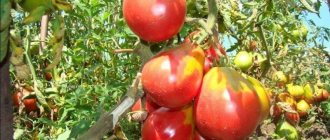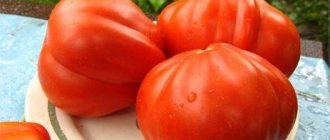Tempranillo is a famous and ancient Spanish grape variety, widely grown in this country and abroad for subsequent processing into high-quality red wines with a soft texture and consistent elegance.
Until recently, it was believed that this variety was related to the old French grape Pinot Noir. Allegedly, Pinot cuttings were brought to Spanish soil by monks from Burgundy, making a pilgrimage to the Cathedral of Santiago de Compostela. However, recent genetic studies have disproved this theory. Thanks to the work of scientists, it became known that the ancestors of Tempranillo grew on the Iberian Peninsula a thousand years BC. According to historians, they were first brought there by the Phoenicians. The immediate parents of the new hybrid turned out to be two other Spanish varieties: white Albillo Mayor and red Benedicto. The first is widely known to this day and is widely grown in the center of the Iberian Peninsula. The second is almost never cultivated, occasionally found only in the province of Aragon. The crossing most likely occurred as a result of spontaneous hybridization.
Until the 17th century, the cultivation of Tempranillo remained limited to continental Spain, where it was cultivated in the cool climate of the northern provinces. In the Rioja and Valdepenas regions it has become the most widespread, being the main grape for the production of the most outstanding local wines. Currently, of the 600 varieties growing in the country, our hero is the most cultivated - it accounts for up to 20% of Spanish wine production.
In Europe, the variety has also become widespread in Portugal, and recently it has begun to be actively cultivated all over the world: the areas occupied by it are increasing very quickly in Argentina, Chile, Peru, Mexico, the USA, South Africa and Australia. This active spread was made possible due to the high plasticity and relatively easy cultivation of Tempranillo. At the same time, it exhibits certain requirements for the microclimate of the growing zone, which somewhat limits the geography of its distribution. In particular, grapes grow best at relatively high altitudes, although they can tolerate much more temperate lowland climates.
Regarding its cultivation in different climatic conditions, experts Fr.
Tempranillo grapes: variety description
Tempranillo berries are dark purple, almost black in color with a matte finish. The shape is medium, round, slightly flattened. They weigh 6-8 grams and measure 15x18 millimeters. In Spanish they are called "ull de Llebre" , which means "hare's eye" .
Among the black varieties, it is worth paying attention to Sangiovese, Pharaoh and Bull's Eye.
There is a white mutation of this variety, which is characterized by green-yellow fruits with a slight bloom. The pulp of dark Tempranillo is colorless, dense, very juicy. Has thin skin.
The color of the wine depends on the thickness of the grape skins. If the shade is bright and saturated, it means the skin is thick and elastic; if it is weak, the skin is tender and soft. Wines for long-term storage are made from thick-skinned fruits.
Grapes grown at high temperatures give the wine a deep, rich color . The clusters are long, cylindrical, narrow, but compact. The height of the vineyard also matters.
Vines that are grown in the lowlands of the earth's surface have lower acidity than those grown above the sea coast. Because of this lack of grape acidity, Tempranillo wines are blended with the Graziano grape variety.
The vine has early ripening of shoots and long internodes.
Trimming the vine to 6-8 eyes . The variety has 5-lobed, very large, wrinkled leaves. At the bottom of the deeply dissected leaf there is a small cobweb pubescence of dense or medium density. The leaf notch is lyre-shaped, petiolate, and can be open or closed. The teeth are large.
The crown of the young cutting is open and has a crimson edge. The color of the leaves is green-yellow with a bronze tint. Has late bud budding. Excellent flowering and pollination. The flower is medium in density, bisexual.
Count of Monte Cristo, Moldova and Galbena Nou also have bisexual flowers.
Properties
Grapes of this variety are used only for the preparation of alcoholic beverages - wine and port. It has optimal acidity, so it infuses well and produces up to 13% alcohol. The wine has a pleasant taste with the aroma of garden berries - raspberries, currants and strawberries. Single-varietal drinks are rarely produced, so Tempranillo is partly blended with Cabernet Sauvignon and Grenache varieties. The wine is suitable for long-term storage; after a few years, the ruby color and fruity aroma intensify.
Calorie content
The grapes of this variety have a low calorie content, up to 64 kcal per 100 grams, which does not affect the quality of the wine. It is practically not used for fresh consumption; as a rule, the largest bunches grown in sunny and elevated areas are chosen for this purpose. The sugar content level is up to 16%, which ensures a rich taste and a high fermentation rate during processing.
Benefits and harms
Grapes and products obtained from this crop are especially beneficial for the functioning of the cardiovascular system. Due to the large amount of vitamins and macro- and microelements beneficial to the body, it has a beneficial effect on the immune system, as well as the condition of the skin and hair. Regular consumption of grapes is beneficial for people exposed to frequent stress and emotional stress.
These fresh grapes are not recommended for use as desserts, since the berries have a slightly sour taste. In addition, it is undesirable to consume berries for chronic diseases of the stomach and digestive system.
Despite the excellent qualities made from the Tempranillo variety, the abuse of alcoholic beverages is dangerous to health, especially for children and women during pregnancy.
Acidity
Tempranillo grapes have average acidity levels for all technical varieties - up to 9 g/l. Taste and richness largely depend on the climate in the region where the berries grew. Fruits collected at higher elevations and mountainous areas have higher acidity.
Photo
Take a closer look at the Tempranillo grapes in the photo below:
How to serve
Like any other worthwhile wine, Tempranillo should be served according to classical rules. Noble alcoholic drinks require special respect. They do not tolerate haste and disregard for established canons.
Wine should be poured into special transparent glasses with a thin stem. Never fill it even halfway. The optimal amount of liquid in a glass is exactly one third. This is the only way to fully enjoy the great taste, taste it and appreciate the color.
Important
Before drinking, alcohol should be cooled to 15-18 degrees. It is this temperature that will allow red wine to fully reveal its taste and share its exquisite aroma.
Wine should be drunk slowly, in small sips.
History of selection
A huge contribution to the strengthening and successful development of the Tempranillo variety was made by two friends, Riscal de Alegre and Murrieta. They were dissident marquises who returned from Bordeaux to Rioja in 1860.
They were the first to prove that the mutual combination of Bordeaux technologies was successful with the Rioja system.
Thanks to good financial resources, knowledge and inspiration, they were able to bring a grandiose project to life.
Like-minded people applied new rules for breeding imported varieties, purchased high-quality oak barrels and renewed plantings annually. Their results were brilliant.
They proved that a continental climate is necessary . It should contain cold and heat . The dissident marquises were able to draw the attention of the whole world to the Tempranillo variety, thereby winning well-deserved recognition.
Tempranillo's harshest growing environment gives the grapes the necessary acidity. The mild climate supports the formation of the desired skin and sugar accumulation.
The variety is very capricious. It grows very poorly on sandy soils . Fertilized soils rich in limestone are beneficial.
Black Emerald, Rizamat and Syrah are also capricious varieties.
With such soil, the roots of the vine are abundantly covered with clay and thanks to it they are in the conditions of necessary moisture. It feels best at a sufficient altitude of more than 700 meters above sea level.
Tempranillo is the most famous variety of the Iberian Peninsula.
85% of the vineyards are in Spain, where it is especially widespread.
Tempranillo wines have a characteristic and distinct expression of terroir.
The habitat in Spain covers warm areas - Alte and the high hills of Penedes. To grow this grape, a continental climate is required.
The variety has been successfully cultivated in Argentina, Mexico, Chile and Portugal. More recently, success has come to Tempranillo in Thailand, Romania, Italy, France, and the USA (Texas, Oregon).
In Russia , this capricious variety takes root well only on slopes above 700 meters above sea level . Where there is warm sunlight, the clusters ripen fully, with good fruiting of berries. In the lowlands, where illumination is low, the variety does not fully ripen and begins to rot.
For good growth of Tempranillo, soil with a high content of limestone is required. Currently, this variety is being planted in the southern regions - Uzbekistan, Mordovia, Dagestan, and the Krasnodar Territory.
Due to the difficulty of cultivation and climatic conditions, Tempranillo in Russia is grown by only 0.5% of high-profile winegrowers.
Growing
Tempranillo grapes can only grow in the southern regions of Russia, where there is no frost below 18 degrees. The characteristics of the continental climate are suitable for the vine. Hot days contribute to the accumulation of the required percentage of sugars, and low night temperatures give the berries the required acidity. The variety is demanding on soil.
- Sandy soils are not suitable for growing Tempranillo;
- Grapes prefer soils containing limestone;
- The variety needs at least 450 mm of natural precipitation per year;
- Tempranillo suffers from the wind. To plant it, you need to look for an area protected from strong air currents.
Attention! It is believed that the best fertilizers for Tempranillo are organic fertilizers.
Characteristics
Tempranillo is very generous and prolific. The berries of this variety are rich in coloring pigments - anthocyanins. Productivity is high with stable fruiting.
One bush bears up to 5 kilograms of fruit.
The most favorable temperature is 16 degrees Celsius at night, 22 degrees during the day . For grapes growing in lowlands, 40 degrees Celsius is required.
Varieties such as Rkatsiteli, Isabella, and Podarok Magaracha also demonstrate high yields.
Vulnerable to wind damage. Tempranillo requires 450 mm of annual rainfall to fully ripen. The grapes are terribly tolerant of spring frosts and excessive droughts. Therefore, in bad weather conditions, the grape bushes are covered with a net, creating a small canopy.
conclusions
- Tempranillo grapes (Tempranillo) are described as a traditional technical variety used for the production of red table wine and port.
- The berries have excellent taste and aroma for making drinks, with optimal acidity and sugar content.
- The taste, quantity and quality of the crop are highly dependent on the climate conditions in the growing region. Recommended for planting at higher elevations.
- The bush is not resistant to diseases and is susceptible to drought, wind and frost. The variety is easy to care for and can only be grown in areas with a warm climate.
- It is important to carry out preventive treatment against pests and diseases, as well as install trellises and protection from wind and cold.
Read about the grape crusher at this link.
Sources:
https://agronom.expert/posadka/sad/kustarniki/vinograd/tempranilo.html https://selo.guru/sadovodstvo/vinograd/tempranilo.html https://poferme.com/vinograd/raznovidnosti/vinnye/sort- tempranilo.html
Resistance to diseases and pests
Tempranillo is prone to genetic mutations and is very susceptible to disease . Due to the thin skin, it is highly susceptible to gray rot - 1 point. Vulnerable to mildew, on a scale of 2 points, leafhopper - 3 points, oidium - 2 points.
Tempranillo grapes are highly susceptible to phylloxera . Phylloxera is a homoptera pest that overwinters on the roots of grapes.
It leaves eggs under its bark, where in the spring the larvae attach themselves to the leaves. The plant begins to die.
At the first symptoms of phylloxera, immediate chemical treatment is necessary. The drugs BI-58, Karbafos and Kinmiks are suitable for this.
Repeated treatment is carried out after 1-14 days.
Due to its sensitivity, grapes require protection from such scourges as anthracnose, bacteriosis, chlorosis, rubella and bacterial cancer. Read how to deal with them in separate materials on the site.
Subtleties of care
Tempraniyo is a capricious variety that requires a special approach to agricultural technology.
The main points of growing grapes:
- installation of supports and trellises to secure the vines;
- sheltering bushes for the winter;
- preventive treatments three times a year;
- pruning the vine to increase productivity and shape the crown;
- installation of an underground irrigation system;
- mulching between rows;
- adding organic matter and minerals.
The grapes need moderate watering at the beginning of development and abundant watering during the dry period. When planting, a pipe for irrigation is dug in the center of the hole. This ensures that the root system is saturated with moisture. The earthen crust is loosened after each irrigation to provide oxygen to the roots. Thanks to mulching, the frequency of loosening is reduced and moisture in the soil is retained.
A month after planting, the grapes are fertilized with a solution of chicken manure in a ratio of 1:15. 14 days before flowering, the bushes are treated with the following solution: 4 g of sodium humate, 5 g of boric acid per 10 liters of water. 14 days after flowering, use a nutrient solution for irrigation: 5 g of boric acid, 20 g of potassium magnesia, 4 g of sodium humate per 10 liters of water.
The variety is not frost-resistant and needs shelter for the winter. To do this, use straw, agrofibre, thick plastic film or spruce branches. The shelter is removed with the arrival of spring.
Trimming
The vines are pruned every year in spring or autumn. The stem ripens early and has long internodes. Grape growers recommend pruning to 6–8 buds. In the spring, on healthy and strong bushes, up to 80% of last year's shoots are removed using a sharply sharpened tool.
The bushes are formed mainly in the shape of a “cup”, common in the Iberian Peninsula. Local winegrowers are confident that this molding allows the sun's rays to illuminate the berries from all sides. This only makes the taste of the grapes better and acquires rich fruity notes.
Disease and pest control
The Tempranillo variety is susceptible to infection by fungi that cause gray rot, mildew and oidium. Timely preventive treatment reduces the risk of developing infections. The work uses exclusively contact fungicides: “Thanos”, “Horus”, “Topaz” and “Tiovit Jet”, “Ridomil”, Bordeaux mixture, colloidal sulfur.
When infected, use a sulfur solution (100 g per 10 liters of water). The bushes are treated in the evening or in cloudy weather at least 3 times every 10 days.
Important! Sulfur is used at air temperatures above +20°C. At low values, grapes are treated with the preparations “Switch”, “Strobi”, “Cumulus DF”.
The most dangerous pest of the crop is considered to be phylloxera, or grape aphid, living on the rhizome. It spreads with lightning speed and leads to the death of bushes. The main sign of infection is growths on the roots.
To kill the insect, pyrethroids (Cypermethrin, Deltamethrin), organophosphorus compounds (Metaphos, Tiofos), and neonicotinoids (Aktara) are used, since folk remedies do not provide the desired result. Biological products: “Bitoxibacillin”, “Fitoverm” are highly effective and safe for humans and the environment.
Harvest and storage
The bunches are trimmed with a sharp instrument in dry weather and immediately sent for processing. Technical grape varieties are not stored for a long time and are used primarily for making wine.
What products does it combine with?
Tempranillo goes well with a wide variety of dishes and snacks. Spanish cuisine, traditionally rich in vegetables and meat, would be especially appropriate in this case. However, with their enormous variety, Spanish wines also make a harmonious combination with other cuisines.
Tempranillo is suitable for many dishes and snacks: meat, seafood, poultry, vegetables and cereals, cheeses, etc. The options for flavor combinations between drinks and foods are truly innumerable. But at the same time, real Spanish wine of proper quality will never get lost in the aftertaste. Which once again confirms the exclusivity and unsurpassedness of this variety.











